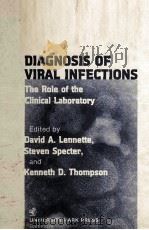《Clinical Laboratory Diagnosis Fifth Edition》
| 作者 | 编者 |
|---|---|
| 出版 | Henry Kimpton |
| 参考页数 | 1246 |
| 出版时间 | 1956(求助前请核对) 目录预览 |
| ISBN号 | 无 — 求助条款 |
| PDF编号 | 812546588(仅供预览,未存储实际文件) |
| 求助格式 | 扫描PDF(若分多册发行,每次仅能受理1册) |

CHAPTER ⅠTHE MOUTH23
Saliva and Sputum23
The Saliva23
Functions of Saliva23
Secretion of Saliva23
Characteristics of Normal Saliva24
Digestion of Starch25
Indications for the Examination of Saliva25
Collection of Saliva25
The Examination of Saliva25
Normal and Pathologic Findings of Saliva26
Chemical Methods27
Pathologic Conditions of the Mouth29
Oral Lesions29
Ptyalism31
Xerostomia or Aptyalism31
Stomatitis31
Vincent's Angina33
Thrush33
Pyorrhea Alveolaris33
Leukoplakia34
Miscellaneous Conditions34
CHAPTER ⅡTHE STOMACH35
Physiology of the Stomach35
Stomach Contents38
Test Meals39
Examination of Stomach Contents45
Normal and Pathologic Findings After a Test Meal46
Acidity Curves56
Acidity Curves After an Ewald Breakfast56
Acidity Curves After Other Important Test Meals59
Additional Examinations of the Stomach60
Motor Power and Emptying-time60
Absorptive Power60
Size and Position61
The Phenolphthalein Test61
Gastroscopic Examination61
Chemical Methods61
Qualitative Analysis61
Quantitative Analysis67
Gastric Diseases76
Peptic Ulcer76
Carcinoma of the Stomach77
Acute Catarrhal Gastritis78
Chronic Gastritis78
Achylia Gastrica79
Gastric Neurosis79
Syphilis of the Stomach79
Gastro-intestinal Syndrome Complexes80
Hypersecretion and Hyperchlorhydria80
Atony of the Stomach80
Acute Dilatation of the Stomach81
Chronic Dilatation of the Stomach81
CHAPTER ⅢTHE DUODENUM AND RELATED ORGANS82
Duodenal Contents82
Duodenal Fluid82
Pancreatic Juice82
Bile82
Indications for the Examination of Duodenal Contents83
Contraindications for the Collection of Duodenal Contents84
Collection of Duodenal Contents and Bile84
Examination of Duodenal Contents and Bile86
Normal and Pathologic Findings of Duodenal Contents87
Chemical Methods94
Qualitative Analysis94
Quantitative Analysis95
Special Analysis97
The Liver99
Functions of the Liver99
Bilirubin and Its Decomposition Products100
Functional Tests101
Diseases of the Gall-bladder110
Jaundice or Icterus110
Cholecystitis112
Cholelithiasis112
Catarrhal Cholangitis113
Suppurative Cholangitis113
Diseases of the Liver113
Cirrhosis of the Liver113
Carcinoma of the Liver115
Abscess of the Liver115
Acute Yellow Atrophy of the Liver115
Acute Infectious Hepatitis115
Diseases of the Pancreas116
Carcinoma of the Pancreas116
Acute Pancreatitis116
Chronic Pancreatitis117
Cysts of the Pancreas117
Pancreatic Hemorrhage118
Calculi of the Pancreas118
CHAPTER ⅣTHE INTESTINE119
The Feces119
Composition of Feces119
Indications for a General Examination of Feces119
Indications for a Search for Parasites and Ova120
Collection of Feces120
Examination of Feces120
Normal and Pathologic Findings of a Stool Examination121
Intestinal Parasites Most Commonly Found in the United States124
Classification of the Parasites to be Discussed124
Discussion of Intestinal Parasites127
Endamoeba histolytica127
Endamoeba coli,Endolimax nana,Iodamoeba butschlii,and Dientamoeba fragilis136
Trichomonas hominis136
Giardia lamblia137
Chilomastix mesnili138
Isospora hominis138
Balantidium coli139
Taenia solium140
Taenia saginata143
Diphyllobothrium latum143
Hymenolepis nana145
Echinococcus granulosus146
Fasciola hepatica148
Clonorchis sinensis148
Fasciolopsis buski148
Paragonimus westermani148
Schistosoma haematobium149
Schistosoma mansoni149
Schistosoma japonicum149
Ascaris lumbricoides151
Enterobius(Oxyuris)vermicularis152
Necator americanus153
Ancylostoma duodenale155
Strongyloides stercoralis155
Trichocephalus trichiurus157
Trichinella spiralis158
Chemical Methods160
Qualitative Analysis160
Quantitative Analysis161
Intestinal Diseases167
Appendicitis167
Diarrhea168
Chronic Constipation168
Carcinoma of the Colon170
Chronic Ulcerative Colitis170
Acute Enteritis170
Amebiasis171
Bacillary Dysentery172
Chronic Enteritis172
Mucous Colitis172
Dilatation of the Large Colon173
Intestinal Obstruction173
CHAPTER ⅤMETABOLISM174
Review of Carbohydrate Metabolism174
General Considerations174
Carbohydrates in the Body175
Glucosuria177
Glucose Tolerance Tests178
Variations in Glucose Content of the Blood185
Disorders Involving Carbohydrate Metabolism186
Diabetes Mellitus186
Benign Glucosurias190
Diabetes Insipidus191
Hyperinsulinism and Hypoglucemia191
Chronic Adrenal Insufficiency192
Subcutaneous Epinephrine Test192
Four-hour ACTH Test193
Water Test193
The Sodium Deprivation Test195
Galactose Tolerance Test197
Review of Nitrogen Metabolism197
General Considerations197
Non-protein Nitrogen200
Urea and Ammonia200
Uric Acid204
Creatine and Creatinine207
Excretion of Nitrogenous Waste Products211
Amino-acids212
Plasma Proteins212
Review of Fat Metabolism213
Plasma Lipoids in Disease215
Review of Organic Acid Metabolism216
Review of Mineral Metabolism216
Review of Acid-base Balance of the Body223
Regulation of Acid-base Balance224
Acid-base Composition of Blood Plasma229
Review of Water Metabolism231
Basal Metabolism234
Principle of the Test234
Preparation of the Patient234
Technic of the Test for Patients Fifteen Years of Age and Older234
Technic of the Test for Infants and Children Under Fifteen Years of Age237
Essentials for the Approval of a Basal Metabolism Report238
Factors Influencing the Basal Metabolic Rate238
Pathologic Conditions Influencing the Basal Metabolic Rate240
Value of the Basal Metabolism Test241
CHAPTER ⅥCHEMICAL ANALYSIS OF THE BLOOD242
General Considerations242
Collection of Blood243
Possible Causes of Hemolysis243
Containers for Blood Specimens243
Blood Required for Analysis244
Anticoagulants and Preservatives246
Separation of Plasma or Serum247
Apparatus Required for Blood Chemical Analysis247
The Calibration of Micropipets249
Visual Photometric(Colorimetric)Analysis250
Objective Photometric Analysis253
Objective Photometers255
Spectrophotometers256
Scale Readings on Objective Photometers and Spectrophotometers257
The Use of Standard Solutions and Calibration Curves257
General Formula when Readings Are in Terms of Optical Density258
Calibration Curves259
Flame Photometry262
Ultramicro Methods(Refer to This Page for Detailed Index)263
Common Sources of Error in Clinical Chemical Determinations265
The Significance of Numerical Reports266
Methodology267
Analysis of Blood267
Index of Blood Chemical Analyses(Refer to this Page for Detailed Index)267
Summary434
Summary of Blood Chemical Analyses435
CHAPTER ⅦTHE KIDNEYS440
The Urine440
Routine Examination of Urine441
Normal and Pathologic Findings of Urine442
Kidney Function Tests454
General Considerations454
Value of the Various Kidney Function Tests454
Technic of the Various Kidney Function Tests455
Comparison of Findings in the Various Renal Function Tests467
Diseases of the Kidneys467
Nephritis467
Nephrosis471
Uremia474
Acute Congestion of the Kidneys475
Chronic Passive Congestion of the Kidneys475
Amyloid Degeneration of the Kidney476
Renal Tuberculosis476
Pyelitis and Pyelonephritis476
Renal Calculus(Nephrolithiasis)477
Hydronephrosis477
CHAPTER ⅧCHEMICAL ANALYSIS OF THE URINE478
Qualitative Analysis of the Urine(Refer to this Page for Detailed Index)478
Quantitative Analysis of the Urine(Refer to this Page for Detailed Index)478
CHAPTER ⅨHEMATOLOGY542
A Review of Normal Hematohistology542
The Origin of the Blood Cells542
Recommended Nomenclature in Hematology543
Formed Elements of the Blood562
Monocytic Series552
Granulocytic Series553
Lymphocytic Series555
Erythrocytic Series556
Thrombocytic Series556
Site of Hematopoiesis556
Fate of the Blood Cells558
General Procedures559
Method for Obtaining Blood Sample559
Examination of the Blood561
Hemoglobin561
Hemocytometer567
Erythrocyte Count570
Sedimentation-rate573
Mean Corpuscular Hemoglobin576
Color Index576
Mean Corpuscular Volume577
Volume Index577
Mean Corpuscular Hemoglobin Concentration579
Saturation Index579
Mean Corpuscular Diameter580
Mean Corpuscular Average Thickness581
Leukocyte Count582
The Stained Blood Film585
Wright's Method585
Special Staining Methods590
Anomalies of the Blood Cells592
Anomalies of the Erythrocytes592
Anomalies of the Leukocytes594
Bone Marrow597
Outline for Examination of the Bone Marrow605
Diseases of Erythropoiesis606
The Anemias606
Classification of the Anemias607
Microcytic Anemias608
Hypochromic Anemias608
Iron Deficiency Anemias608
Iron Metabolism609
Morphologic Characteristics610
Hemolytic Anemias618
Macrocytic Anemias618
Cellular Deficiencies618
Cellular Factors Not Yet Elucidated624
Normocytic Anemias624
Sudden Blood Loss625
Incfeased Erythrocyte Destruction625
Blood Volume633
Hemoconcentration638
Hemolytic Anemias641
Intra-corpuscular Defects641
The Hemoglobinopathies643
Extra-corpuscular Defects658
Determination of Blood Groups663
Blood Bank Procedures688
Deficient Erythrocyte Formation692
The Polycythemias697
?ypersplenism699
?iseases of Leukopoiesis701
Leukemoid Reactions701
Eosinophilia701
Basophilia703
Lymphocytosis703
Monocytosis707
Non-specific Leukemoid Reactions707
Bone Marrow Stimulation707
Extramedullary Hematopoiesis708
Leukopenias708
Impaired Formation Predominant708
Increased Destruction Predominant710
Hematopoietic Neoplasms714
Leukosis714
Acute Leukemias715
Subacute Leukemias718
Chronic Leukemias718
Miscellaneous Leukemias720
Atypical Forms of Chronic Leukemia720
Plasmacytic Myeloma721
Lymphoblastomas725
Follicular Lymphoblastoma725
Reticulum Cell Sarcoma726
Lymphosarcoma726
Hodgkin's Disease726
Lipoid Histiocytoses726
Lipoid Histiocytosis727
Gaucher's Disease727
Disorders of Hemostasis731
Sequence of Events to Repair Damaged Vessel731
Preliminary Diagnostic Procedures731
Bleeding-Time731
Coagulation and Coagulation Time732
Clot Retraction733
Capillary Resistance733
Classification of Hemorrhagic Disorders735
Disorders Primarily Affecting the Vessel Wall735
Bleeding Associated with Reduced Number of Thrombocytes736
Classification of the Thrombopathies738
Bleeding Associated with Defects in Blood Coagulation741
Phase Ⅰ—Formation of Thromboplastin741
Phase Ⅱ—Formation of Thrombin744
Phase Ⅲ—Formation of Fibrin744
Laboratory Tests744
One-stage Prothrombin Time744
Thromboplastin Generation Test747
Two-stage Prothrombin Test740
Thrombin Generation Test751
Prothrombin Consumption Test752
Modified Prothrombin Consumption Test753
Disorders of Phase Ⅰ(Hypothromboplastinemias)754
Deficiency of Thrombocyte Thromboplastin756
Deficiency of Antihemophilic Globulin756
Deficiency of Plasma Thromboplastic Component756
Deficiency of Plasma Thromboplastic Antecedant757
Deficiency of Hageman's Trait757
Disorders of Phase Ⅱ(Hypothrombinemias)757
Hypoprothrombinemias757
Stable Factor Deficiency750
Labile Factor Deficiency760
Bleeding Associated with Circulating Anticoagulants760
Disorders of Phase Ⅲ(Hypofibrinogenemias)765
Congenital Afibrinogenemia765
Constitutional Fibrinopenia765
Acquired Fibrinopenia765
Disorders in the Fibrinolytic Mechanism766
Parasites of the Blood767
Malarial Parasites767
Borrelia Recurrentis767
Trypanosoma Gambiense768
Filaria Bancrofti768
Trichinella Spiralis768
CHAPTER ⅩIMMUNOLOGY AND SEROLOGY770
Immune Bodies771
Reactions in Which Immune Bodies are Used772
Agglutination Tests772
Widal Test772
Other Agglutination Tests775
The Isohemagglutinins782
Precipitin Tests782
Identification of Proteins782
Diagnosis of Echinococcus Disease784
Tests Based Upon Immune Bodies of the Third Order784
Complement Fixation784
Wassermann Reaction785
Complement-fixation Test for Syphilis(Kolmer)787
Other Complement-fixation Tests799
Additional Tests for Syphilis802
The Kahn Precipitation Test802
The Kahn Test with Spinal Fluid800
The VDRL Slide Flocculation Test812
The VDRL Tube Flocculation Test819
The VDRL Spinal Fluid Test820
The Treponema Pallidum Immobilization Test821
CHAPTER ⅪCEREBROSPINAL FLUID823
Physiology of the Cerebrospinal Fluid823
Composition of the Cerebrospinal Fluid823
Indications and Contraindications for Collection of the Cerebrospinal Fluid824
Routine Examination of the Cerebrospinal Fluid826
Normal and Pathologic Findings of Cerebrospinal Fluid826
The Cerebrospinal Fluid in Disease842
CHAPTER ⅫTRANSUDATES AND EXUDATES843
Collection of Fluids843
Routine Examination843
Findings of the Examination843
Synovial Fluid845
Disease Processes Associated with the Accumulation of Transudates846
Disease Processes Associated with the Occurrence of Exudates847
CHAPTER ⅩⅢGENERAL BACTERIOLOGY848
Collection of Specimens848
Bacteriologic Technic851
Examination of Specific Materials854
Bacteriologic Diagnosis858
The More Common Bacteria as Classified by Bergey888
Fungi and Yeasts893
Technics Used in Mycology906
Special Preparations and Examinations910
Sensitivity Tests for the Antibiotics917
Antibiotic levels in Body Fluids920
Preparation of Culture Media924
Stains and Staining Methods943
CHAPTER ⅩⅣTHE SPUTUM952
The Sputum952
Important Contents of the Sputum952
Indications for Analysis of the Sputum952
Collection of the Sample952
The Examination of Sputum952
Routine Examination of Sputum953
Normal and Pathologic Findings of Sputum954
The Sputum in Disease963
Acute Bronchitis963
Chronic Bronchitis963
Putrid Bronchitis963
Fibrous or Plastic Bronchitis963
Bronchiectasis964
Bronchial Asthma964
Bronchopulmonary Lithiasis964
Pulmonary Tuberculosis965
Acute Lobar(Croupous)Pneumonia966
Bronchopneumonia966
Influenza967
Pneumoconiosis968
Pulmonary Abscess968
Pulmonary Gangrene969
Malignant Disease of the Lung969
Chronic Passive Congestion969
Pulmonary Edema969
Infarction969
CHAPTER ⅩⅤSKIN TESTS AND OTHER BIOLOGIC EXAMINATIONS971
The Schick Test for Antitoxin Immunity to Diphtheria971
The Dick Test for Susceptibility to Scarlet Fever973
The Schultz-Charlton Reaction;the Rash Extinction Test for Scarlet,Fever975
Tuberculin Reactions975
Tests for Hypersensitivity979
Passive Transfer981
Nasal Smears for Eosinophil Count981
Reaction to Horse Serum982
Frei Test for Lymphogranuloma Inguinale982
Intracutaneous Test for Argyria983
Skin Test for Lead Poisoning983
Skin Test for Echinococcus Infestation(Hydatid Disease)983
Skin Test for Trichinosis984
Trichophytin Test984
Brucella Skin Test985
Skin Test for Chancroid985
Test for Coccidioidomycosis985
Test for Glanders985
Test for Histoplasmosis986
Test for Trichinosis986
Test for Tularemia986
Test for Mumps986
McClure-Aldrich Test(Intradermal Salt Solution)987
Smallpox Vaccination988
The Rabbit Test for Pregnancy(Schneider Modification of the Aschheim-Zondek Test)988
The Frog Test for Pregnancy990
The Spermatozoa Count901
CHAPTER ⅩⅥLABORATORY METHODS IN PEDIATRIC PROCEDURES994
The Stomach994
Methods for Study of Gastric Acidity995
Interpretation of the Findings of Gastric Analysis997
Demonstration of Tubercle Bacilli in Gastric Contents998
The Duodenal Fluid998
Cystic Fibrosis of the Pancreas999
Screening Test for Fibrocystic Disease of the Pancreas999
The Celiac Syndrome999
The Stool1001
Points of Special Interest1001
Normal Stools1002
Factors Influencing the Character of Normal Stools1002
Findings of Stool Analysis1003
Stools in Specific Conditions1004
Constipation1004
Diarrhea1004
Intussusception1005
Pyloric Stenosis1005
Congenital Atresia1005
Stricture of Anal Canal1005
Hirschsprung's Disease(Megacolon)1005
Celiac Disease1005
Pancreatic Steatorrhea1006
Acute Intestinal Indigestion1006
Marasmus1006
Cholera Infantum1006
Bacillary Dysentery1006
Epidemic Diarrhea1007
Pellagra1007
The Urine1007
Kidney Function Tests1013
Blood Chemistry1015
Cerebrospinal Fluid1018
CHAPTER ⅩⅦTROPICAL DISEASES1020
Tropical Diseases1020
The Important Protozoa of Man1020
Bacterial Diseases1021
Rickettsial Diseases1021
Virus Diseases1022
Dysentery1022
Kala-azar1022
Cutaneous Leishmaniasis(Oriental Sore)1025
Mucocutaneous Leishmaniasis(Espundia)1026
African Trypanosomiasis(African Sleeping Sickness)1028
Chagas'Disease1030
Malaria1032
Blackwater Fever1040
Relapsing Fever1040
Yaws1042
Pinta1044
Infectious Jaundice(Weil's Disease)1045
Granuloma Inguinale1046
Cholera1049
Rat-bite Fever1050
Plague1051
Tularemia1052
Brucellosis(Undulant Fever)1053
Typhoid Fever1054
Leprosy1054
Typhus Fever1055
American Spotted Fevers1056
Scrub Typhus(Tsutsugamushi Disease)1057
Q-Fever1058
Trench Fever1058
Bartonellosis(Verruga Peruana and Oroya Fever)1059
Yellow Fever1060
Rift Valley Fever1061
Dengue1061
Sandfly Fever(Phlebotomus Fever)1062
Other Virus Diseases1062
CHAPTER ⅩⅧMILK AND WATER ANALYSIS1064
Milk Analysis1064
Collection of Sample1064
Chemical Analysis1064
Bacteriologic Analysis1068
Bacteria Count1068
Coliform Count1071
Hemolytic Streptococci1072
Tubercle Bacilli1072
Brucella1073
Bacteriologic Testing of Infant Formula1073
Efficiency of Hospital Sterilization1075
Water Analysis1075
CHAPTER ⅩⅨHISTOLOGIC TECHNIC1080
Index of Staining Technic1080
Index of Fixation and Sectioning Technic1082
Index of Supplementary Methods1083
Index of Solutions and Stains1083
Fixation and Sectioning Technic1085
Staining Technic1090
Supplementary Methods1123
Solutions and Stains1124
CHAPTER ⅩⅩLEGAL MEDICINE AND TOXICOLOGY1137
General Considerations1137
Essential Factors in the Diagnosis of Poisoning by Clinical Findings1138
Diseases Simulating Poisoning1138
Clinical Symptoms Associated With Poisoning and Various Diseases1138
Collection of Specimens1140
Blood Stains1141
The General Search for Poisons1141
Preparation of Specimens for Analysis1142
Poisons Which are Volatile with Steam1142
Metallic Poisons1148
Alkaloids and Other Organic Poisons1150
General Tests1151
Strychnine1152
Atropine1152
Cocaine1152
Opium Alkaloids1153
Nicotine1153
Barbiturate Soporifics and Analgesic Drugs1154
Barbiturate Drugs1155
Other Neutral or Acidic Organic Poisons1156
Salicylates1156
Aniline Derivatives1156
Caffeine1157
1956《Clinical Laboratory Diagnosis Fifth Edition》由于是年代较久的资料都绝版了,几乎不可能购买到实物。如果大家为了学习确实需要,可向博主求助其电子版PDF文件(由 1956 Henry Kimpton 出版的版本) 。对合法合规的求助,我会当即受理并将下载地址发送给你。
高度相关资料
-

- clinical laboratory methods and diagnosis vplime 1 gradwohl's
- 1963 the c.v.mosby company
-

- CLINICAL LABORATORY DIAGNOSIS
- 1952 LEA & FEBIGER
-

- CLINICAL LABORATORY METHODS AND DIAGNOSIS FIFTH EDITION VOLUME I
- 1956 HENRY KIMPTON
-
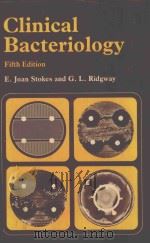
- CLINICAL BACTERIOLOGY FIFTH EDITION
- 1980 EDWARD ARNOLD
-
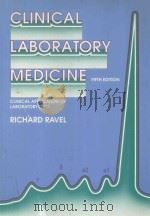
- CLINICAL LABORATORY MEDICINE FIFTH EDITION
- 1989 MOSBY YEAR BOOK
-
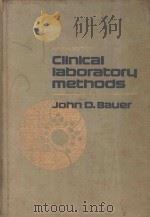
- CLINICAL LABORATORY METHODS NINTH EDITION
- 1982 THE C.V.MOSBY COMPANY
-
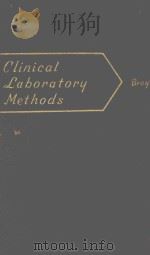
- CLINICAL LABORATORY METHODS FOURTH EDITION
- 1951 UNIVERSITY OF VIRGINIA
-

- PRACTICAL NEUROLOGICAL DIAGNOSIS FIFTH EDITION
- 1953 CHARLES C THOMAS PUBLISHER
-
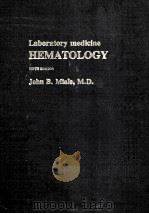
- LABORATORY MEDICINE HEMATOLOGY FIFTH EDITION
- 1977 THE C.V.MOSBY COMPANY
-
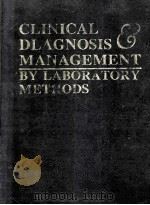
- CLINICAL DIAGNOSIS MANAGEMENT BY LABORATORY METHODS
- 1991 W.B.SAUNDERS COMPANY
-
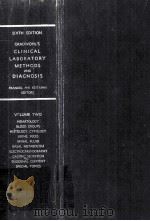
- clinical laboratory methods and diagnosis voiume2 gradwohl's
- 1963 the c.v.mosby company
提示:百度云已更名为百度网盘(百度盘),天翼云盘、微盘下载地址……暂未提供。➥ PDF文字可复制化或转WORD



